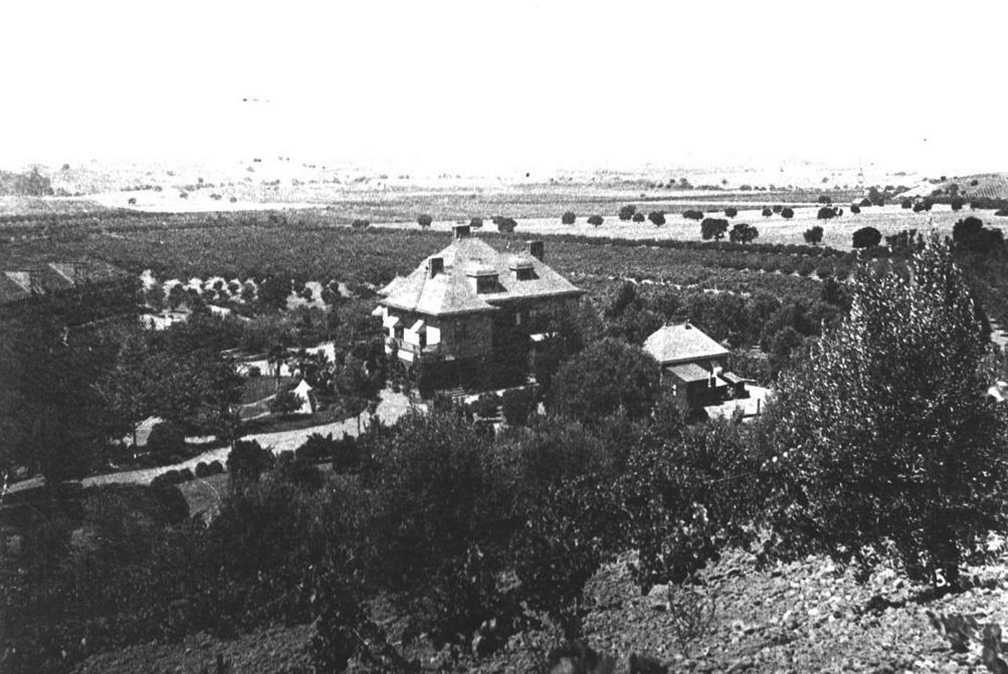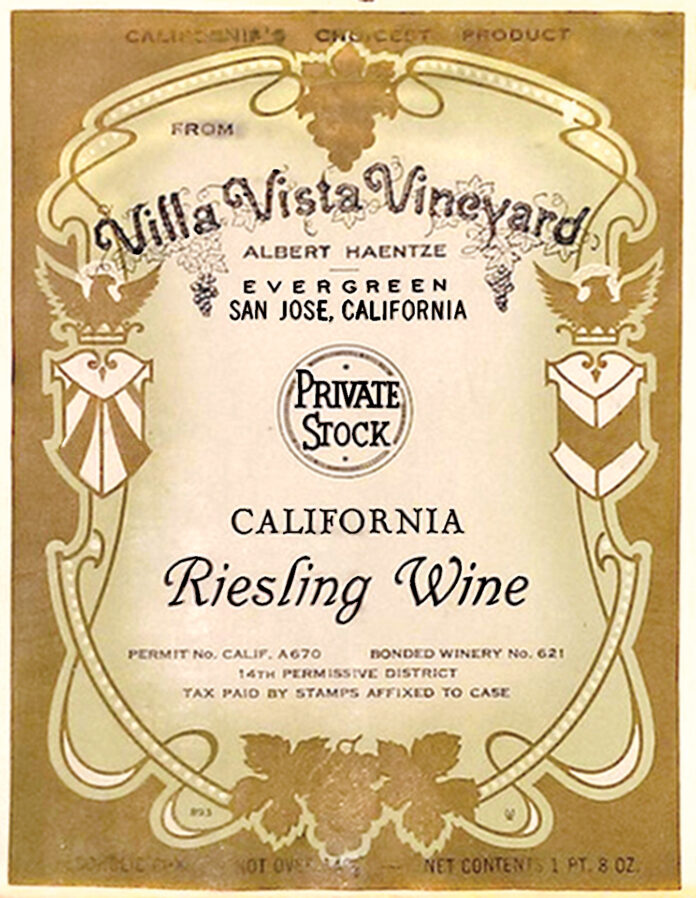In 1915, William Wehner sold his winery and vineyards to Albert Haentze. The two men had a lot in common. Haentze (1896-1947) was also a German immigrant and a vintner living in Chicago. His primary occupation before coming west was as a mortgage broker.
William Wehner sold his vineyards at a very opportune time—a few years before Congress ratified the 18th Amendment with the prohibition of the production, importation, transportation and sale of alcoholic beverages. Prohibition caused many of the local wineries to close down, and Wehner died about a year after it took effect.
The Volstead Act was set down by Congress establishing the rules for enforcing the federal ban of alcoholic beverages. Not all alcohol was banned—religious use of wine was permitted. And some local wineries were still producing sacramental wines for churches and temples, including Haentze’s operation. Once Prohibition began, the Santa Clara Valley Grape Growers promoted other legal options, such as considering canning grapes and crushing grapes for juices and syrup.
Overall, Prohibition had a negative effect on the US economy by eliminating the fifth largest industry in the nation at that time. The support for Prohibition diminished and it was eventually repealed in 1933 by the 21st Amendment.
Much like Wehner, Albert Haentze was an experienced businessman, familiar with producing wine, and having run large business operations, he was no stranger to the world of finance. Haentze renamed the winery Rancho Villa Vista and he took what Wehner established and ran it in much the same way—perhaps an unintentional tribute to his predecessor.
Haentze became well-connected in the field of viticulture, later serving as the president of the Santa Clara County Grape Growers and California Wine Advisory Board, among his several other professional memberships. He was naturally suited for a bright future as one of the top vintners in the region.
When Prohibition was repealed in 1933, the surviving California wineries were able to rebuild and the burgeoning California wine industry surged forward. This new beginning foreshadowed the success of big wine producers and the control of wine labels by big corporations—essentially the modern California wine industry as it exists today was set back on its course in the wake of Prohibition.
Eventually Haentze sold his vineyard to the University of California at Berkeley for a viticulture lab, but the university later decided to locate the lab in Santa Cruz County.
Another well-established winemaking family, the Cribaris, purchased the Evergreen winery operation from the University of California. The Cribaris already had quite a broad winemaking history when they picked up the Villa Vista property.
The Roots of Evergreen series will be published the third week of each month and posted in the Online Villager. Series compiled and written by S.R. Hinrichs. The next article will feature the Cribari Family, the most famous name in Villages’ history.






